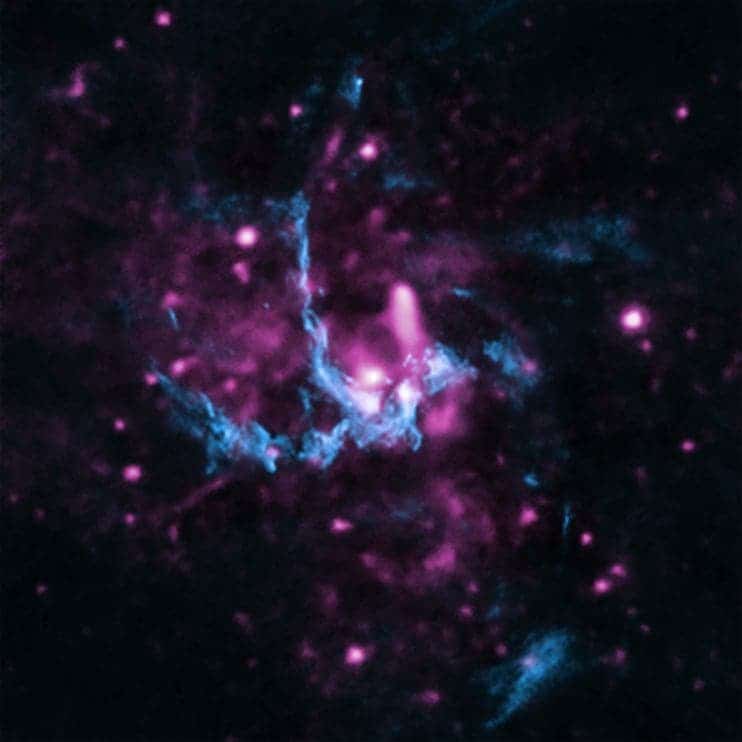
Two decades ago, astronomers started to find evidence that almost all galaxies have a supermassive black hole at their center. However, the discovery of a trio of black holes circling the center of a distant galaxy, reported by astronomers on Wednesday indicates that duos and trios of black holes are much more common than previously thought.
“We were quite surprised to find it,” says Roger Deane, of the University of Cape Town in South Africa, lead author of the report.
It’s believed that multiple black hole systems occur when galaxies merge together – the gravitational attraction of the galaxies makes them merge together, and what you end up is three black holes gravitating around each other, with a big galaxy around them. It’s expected that our neighboring galaxy Andromeda will experience a similar phenomenon in the future.
Studying these mergers often provides information about how gravity behaves when stretched to its limits. However, in practice, astronomers haven’t really found many double black holes – let alone a trio.
This finding is especially interesting because two of the black holes are orbiting each other so closely, that initially, researchers thought they were looking at just one black hole. The pair, “is so sexy is because we really don’t know whether black holes ultimately merge”, says Princeton astrophysicist Jenny Greene. However, the current astrophysical theory indicates that they will not merge for billions of years, even if they are so close.
It will be interesting to see what information future observations and analysis will yield.
Scientific Reference: A close-pair binary in a distant triple supermassive black hole system






